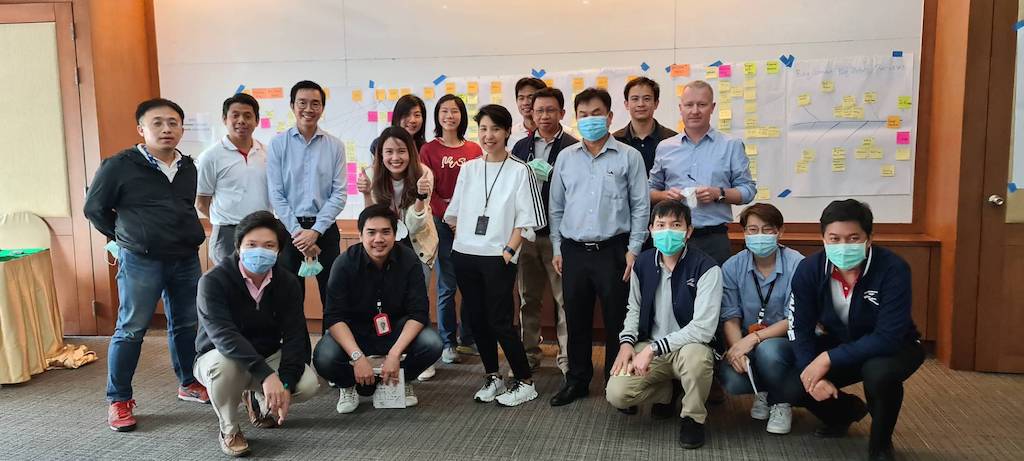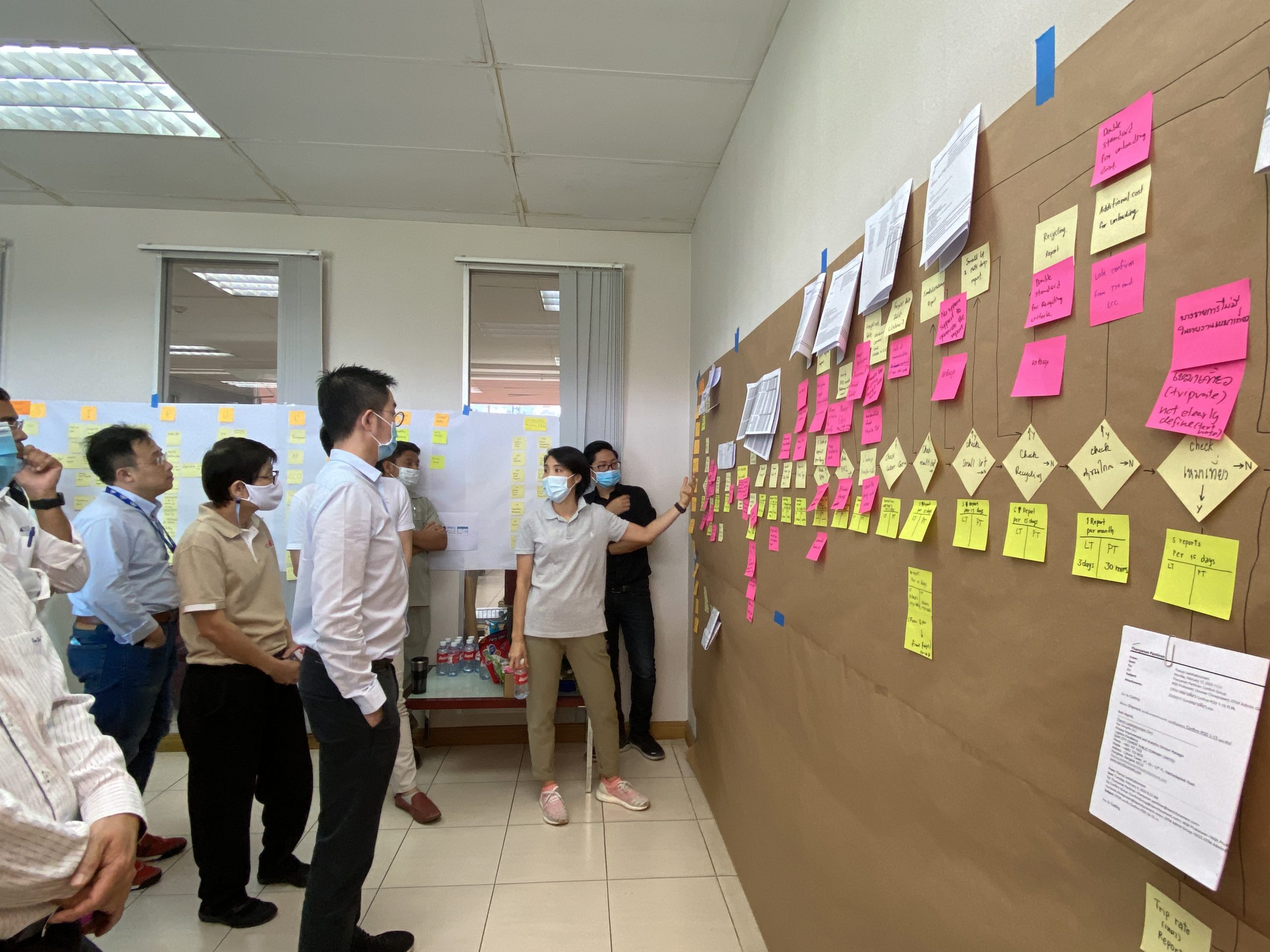We have already learned about business motivations for starting a KAIZEN™ transformation and about the very concrete How-To approach that Siam City Cement Public Company Limited Thailand (SCCC) took to give all supply-chain employees an active part in the journey. Now, in the conversation between Paul Hayes, Head of Supply Chain at SCCC and Ramesh Raju, Managing Partner, Kaizen Institute Thailand, it is time for a review: Where does SCCC stand today in their implementation? And what are the conclusions of their KAIZEN™ journey so far? Read on to get further insights and advice on how to make such a transformation concrete.
“Learning by doing is clearly applicable to all functional groups in a business, beyond production.”
Ramesh Raju: We have talked about the value of learning by doing. Can you share an example of this working in practice?
Paul Hayes:
Sure – one good example was applying a pull type KANBAN approach to our finished packaging materials inventories that were used to push type production planning. Having explained the philosophy and approach, we started with one Stock Keeping Unit (SKU). While implementation could have been fast, we decided to let the teams find their own way, at their own speed. Kaizen Institute initially guided our production team with one SKU – after that, they successfully managed another SKU on their own in three weeks. That allowed them to get used to the concept and make the necessary adjustments to be able to take on the remaining SKUs.
Siam City Cement Public Company Limited (SCCC): Commitments
Working as a team
One group, one vision, one team united in heart with our business partners for the good of all.
Doing what is right
Staying true to ourselves and each other, maintaining the highest standards of discipline and integrity in everything we say and do.
Challenging conventions
We are imaginative and always open to new ideas. We approach every business challenge with enthusiasm and strive to deliver innovative solutions beyond expectations.
Caring about our future
We are committed to creating a positive future for generations to come. Caring for our people, our environment, our community, our nation.
Source: SCCC Annual Report 2020
Do you think learning by doing can be applied in an office environment?
It is clearly applicable to all functional groups in a business, beyond production. It is of course more easily understood in a production environment, since you are dealing with physical things. For example, within our offices, we successfully applied it to our Accounts Payable and supply chain costing processes. Our office team worked through it themselves, identifying waste in their processes, proposing solutions and implementing them along the way.
What takeaways did your cross functional teams come up with?
When other SCCC functions looked at the supply chain they were able to see obviously that something big was happening and they needed to make the change as well.
One example I have in my mind is when a Vice President from another function spent some time with us, walking around and looking and hearing what was happening. He told me he could sense there was something important going on, just by the energy of the people and their openness and enthusiasm at all levels. An overwhelming amount of positive vibes from everyone, he said.
“The new way of working is about looking for Continuous Improvement. We do it because we would not even consider going back to the traditional way of doing projects.”
Can you share your key conclusions on transitioning to a KAIZEN™ way of working.
The KAIZEN™ way centers around the importance of examining a process in great detail, focusing on problem areas, the pain points. This means involving people that actually do the work, your production or office personnel. When we bring in external consultants, they come with detailed reports of what the problems are and what it should be. We need to accept that change does not come overnight, but simply by steady and orderly application of a methodology that targets small improvements one at a time by involving people at every level.
These small steps can have a major impact on company efficiency and profitability. We found a way to take the people on that journey and coach them through that. Not everyone will progress at the same speed. Yet, once a team is in place that understands the principles, be prepared to witness some outstanding improvements. It is important to recognize that no process is perfect. Hence, future changes will inevitably be required to keep up with technology and/or the competition. What is important is to have a business structure that operates the KAIZEN™ way, the structured and analytic way, if the goal is to maximize operational efficiency within a supportive environment.
“The KAIZEN™ way centers around the importance of examining a process in great detail, focusing on problem areas, the pain points. This means involving people that actually do the work.”
Now that you have solved the most urgent challenges – is it time to relax?
No, definitely not. The new way of working is about looking for Continuous Improvement; how can we do things better? This new way of working for me and for everybody involved is not like a traditional project that we need to implement because someone wants to roll it out. Instead, we do it because we would not even consider going back to the traditional way of doing things.

What advice would you give to leaders’ contemplating a KAIZEN™ journey?
Be prepared to accept that it is an involving and relatively long-term journey, far beyond being ‘the flavor of the month’. Company management needs to realize that it is not only about a long-term commitment, but also about one that will change the detailed way the business operates. It is also an ongoing process, since there are always improvements that can be made to any company process at any time. A KAIZEN™ journey must be your main show in town, if you truly want to reap the benefits it has to offer, both now and in the future.
Click here to read the first part of this trilogy.
Click here to read the second part of this trilogy.
